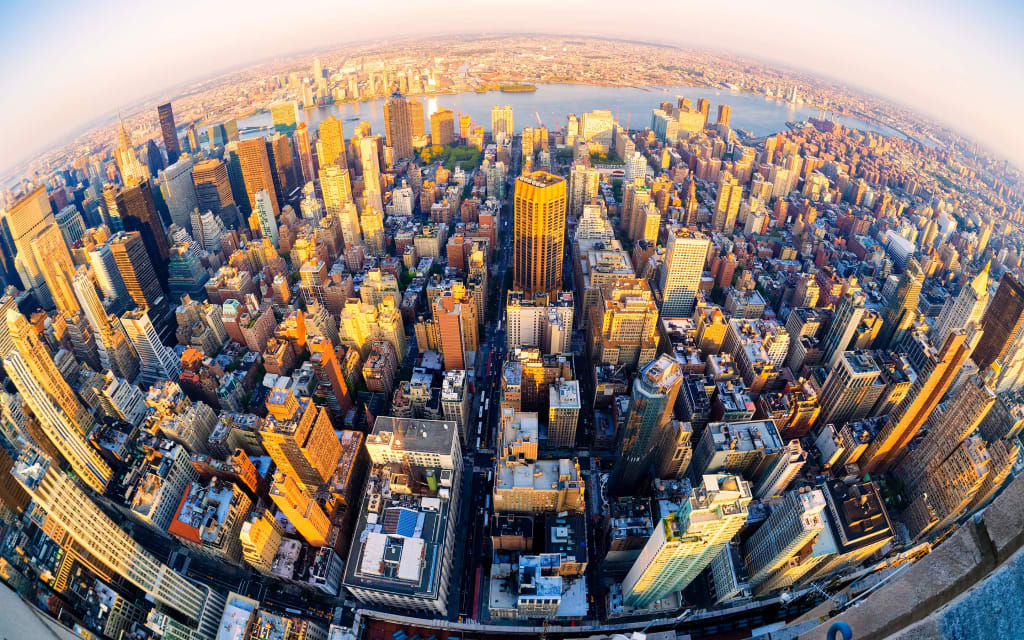Ways to Use a Fisheye Lens
Whether close up or a wide landscape, there are many different ways to utilize the fisheye lens in photography and create photos that are both unique and expressive.

A fisheye lens is a great tool for any photographer to utilize, whether beginner or professional. The fisheye effect can do a variety of different things in a photo, such as creating long exposures and wide panoramic shots, increasing the field of view in an image, and creating unique circular images. Fisheye lenses will increase the diversity of a photographer’s portfolio and will challenge them to get creative behind the camera.
One way a fisheye lens can be utilized is to round out an image. Circular images with the 180 degree view are unique because most photographers capture rectangular or square images, straight lines, and pictures that reach the edge of the frame. With a circular image that is rounded out, straight lines have to be looked at differently. The angle of view is distorted, which makes the circular fisheye effect a photographer’s best friend, if they perfect the many ways to use it.
The fisheye effect distorts photographs and warps them in a creative way by rounding them and changing the shape of the objects in view. Items in the image will not appear the way they are in real life when you see them through a fisheye lens, which is one of the predominant reasons you need a fisheye lens. This makes for very interesting photography and a different view of the world. It brings forth imagination and a different sense of the word art. While photography normally gives you a real world view, the fisheye lens can bring a fictional world into the real world.
Radial blur is a cool effect that photographers can use with their fisheye lens. This is a distortion technique, which takes a circular image and adds a blurring effect so that the person looking at the photo feels somewhat dizzy. The entire image has a blur that makes it appear as if it is going in a circular motion. It’s an interesting effect that makes the photo feel like it is moving from one world to another, or may even resemble a dreamlike state.
Another great benefit of the fisheye effect is that it works as a wide angle lens as well. A fisheye lens can capture wide landscapes extremely well, and it will not distort the landscape at all. You can adjust the distortion when using this camera feature, so if you want to capture a wide landscape, just set your lens to zero distortion, and you’ll get a great view of the landscape in front of you.
Fisheye lenses are great for close ups because the rounded aspect of a fisheye keeps the center of the photo close up and the rest of the photo farther away. It’s all about focal length when shooting photography. The focal point of your photo is at the center, which is why you’ll see many fisheye shots as close up photos, such as with the nose of animals or baby’s eyes right up close. This is why the fisheye lens is one of the best lenses for portrait photography.
Tilting the camera up or down is a great technique to use when you have your fisheye lens on your camera. You’ll be able to see how noticeably tall buildings and mountains are when you keep the ground in your shot and use your Samyang 8mm lens to capture the heights above you. It can truly be said that this lens shows depth in ways other lenses can’t.
Use your fisheye lens to exaggerate almost any subject in your photo, whether it be animals, humans, landscapes, buildings, action shots, patterns, or more. A fisheye has the capability to really make your photo unique through distortion, widening, and close ups. Whatever your image was before, a fisheye lens can make it something more interesting to look at. The lens can transform it so that people who look at the photo will have to take a second to think about it.
Photos of the sky or ceiling are great to capture with a fisheye lens because of the wide angle capability that it has. The vastness of a ceiling or a sky view will be captured accurately with this lens because when the distortion is cut off, it has such a wide angle. It’s hard to look up at such a wide and beautiful sky and think, “Wow, how will I ever be able to share this with others in a photo?” With the fisheye effect, it is possible.
Abstract images and patterns are excellent subjects for a fisheye effect because, when placed in a circular image, these patterns become even more interesting. The way the fisheye lens bends the pattern will make it stand out, and as the pattern gets smaller towards the edges of the frame, it will seem to endlessly go onward.
Last but not least, for the not-so-professional photographers, fisheye lenses are great for selfies! Because these lenses have such a solid central focal point, you can master the selfie with this lens by simply using your face as the focus of your photos, no matter the instance. Whether you’re traveling to new places and want to make sure you document the moment, or maybe you’re just feeling good about the way you look today, a fisheye lens is one of the best accessories every photographer needs.
A fisheye effect can be utilized in many different ways, whether for more advanced photographers or simple, beginner techniques. There are many video tutorials online that can teach you more about capturing fantastic photography with this camera accessory. However you choose to use the lens, it’s a great addition to any photographer’s camera bag.
About the Creator
Morgan E. Westling
Avid Reader, Freelance Writer/Editor, and Lifestyle Blogger






Comments
There are no comments for this story
Be the first to respond and start the conversation.